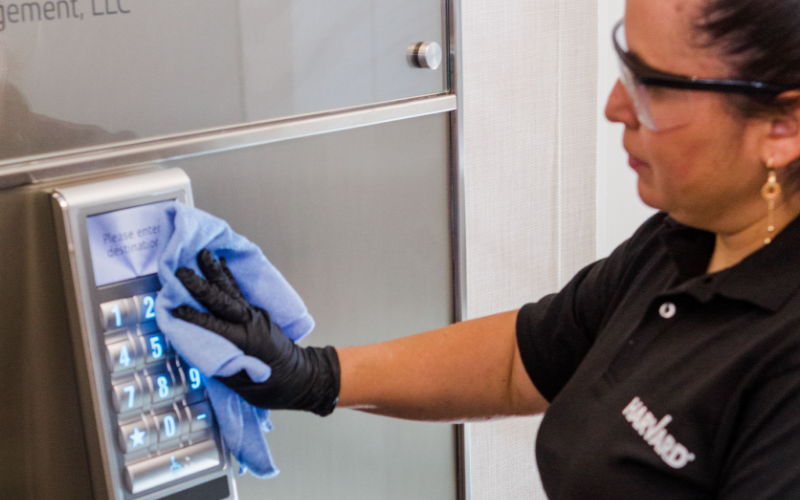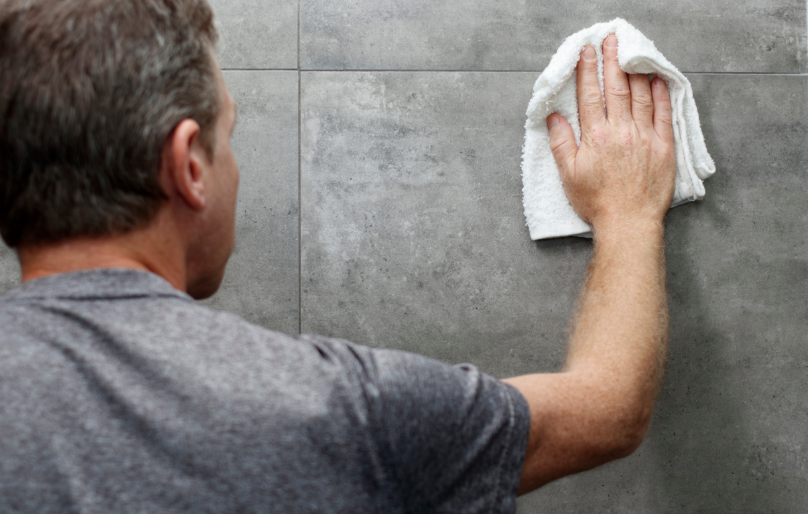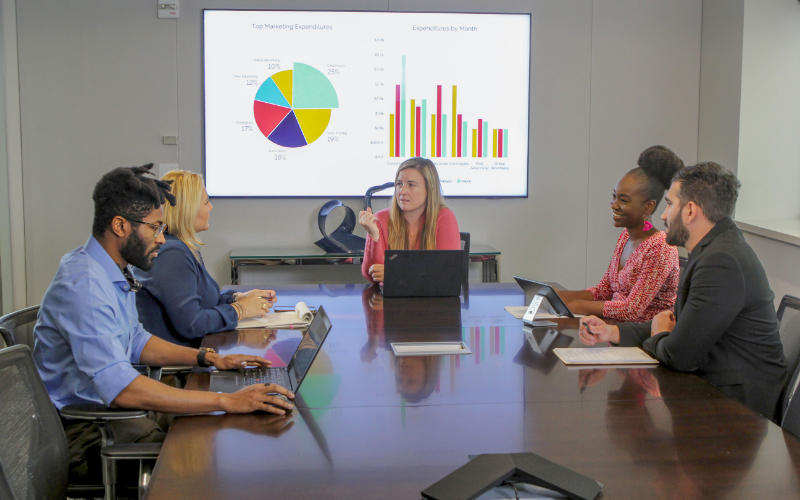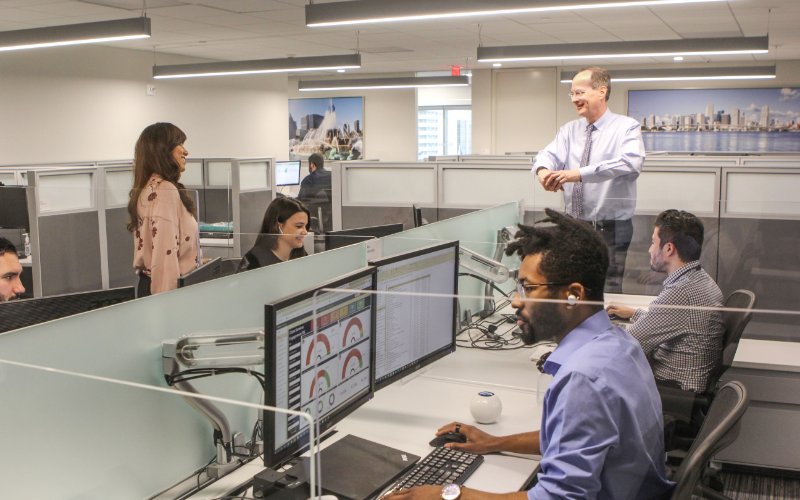Indoor air quality (IAQ) plays a central role in a comprehensive cleaning strategy, complementing targeted cleaning, sanitation, and disinfection of surfaces. There are four main types and concentrations of airborne contaminants found in buildings that can jeopardize human health: particulate matter & airborne viruses, volatile organic compounds, carbon dioxide, and carbon monoxide. To mitigate their impact requires a targeted combination of ventilation, filtration, and disinfection, which can be determined by a facility risk assessment. Understanding the appropriate interventions for your facility can have a real impact on the health of your building’s occupants and could mean the difference between a few cases of COVID-19, influenza, or other respiratory illnesses, and outbreaks involving many.
PARTICULATE MATTER & AIRBORNE VIRUSES
This broad category encompasses fibers, metals, soils, and dusts, as w ell as viral and bacterial pathogens (and the dusts and aerosols that may contain them), and fungi (or mold spores). Their health effects can range from mild lung irritation to life-threatening illness.

SOURCES: People, interior fur nishings, building materials, smoke, and exhaust fumes.
SOLUTIONS: Filtration and disinfection technologies for both air and surfaces
- Filtration: To remove infectious droplets from the air, ASHRAE (the American Society of Heating, Refrigerating and Air -Conditioning Engineers) recommends using HVAC (heating, ventilation, and air conditioning) system filters that are rated according to a minimum efficiency reporting value (MER V) of 13. If not applicable, utilize portable or ceiling-mounted highly efficient particle filtration (HEPA) units.
- Disinfection: Ultra-violet (UV)-C light is among the most recognized and effective technologies for air disinfection. If integrated into your facility, a UV-C system must be professionally installed near a room ceiling or inside the HV AC system of a building.
VOLATILE ORGANIC COMPOUNDS (VOCs)
VOCs are a large class of chemicals that can be emitted as vapor or come in a gaseous form. Some VOCs can cause lung irritation, making the interior environment uncomfortable for occupants, while others can result in sever e long-term effects, such as cancer.
SOURCES: Building materials, furnishings, paint, carpeting, and process chemicals.
SOLUTIONS: Elimination, substitution of a chemical or product, and/or engineering controls such as
improved ventilation.
CARBON DIOXIDE
Carbon dioxide (CO 2) is a colorless, odorless gas that is naturally present in the air. Inside a facility, it is primarily produced by people through their exhalations. If a building is crowded or the ventilation system is inadequate (or not working properly), then carbon dioxide concentrations will be elevated. The Occupational Safety and Health Administration (OSHA) sets health limits of 5000 parts per million for an eight-hour workday. At unsafe, higher levels, people inside may
experience drowsiness, headaches, dizziness, difficulty breathing, sweating, increased heart rate, and increased blood pressure.
SOURCES: People and animals.
SOLUTIONS: Ensure that HVAC systems are designed to comply with minimum ventilation requirements set by ASHRAE and verify that these systems are operating as designed. For systems equipped with variable (controllable) outside air dampers and CO 2 sensors, a demand-controlled ventilation (DCV) sequence can be added that will measure and remove CO2 by dilution with variable amounts of fresh air.
CARBON MONOXIDE
Carbon monoxide (CO) is a colorless, practically odorless, and tasteless gas that results from incomplete oxidation of carbon in combustion processes. OSHA sets a strict limit of 50 parts per million for an eight-hour workday . Carbon monoxide is a very serious health hazard. At low concentrations, it can cause fatigue in healthy people and chest pain in people with heart disease. At high concentrations, it can impair vision and coordination and cause headaches, dizziness, confusion, nausea, and even death.
SOURCES: Vehicle exhaust, heaters, stoves, boilers, furnaces, leaking or improperly vented chimneys and flues.
SOLUTIONS: Hazard mitigation through first identifying and controlling sources, then improving ventilation.
























